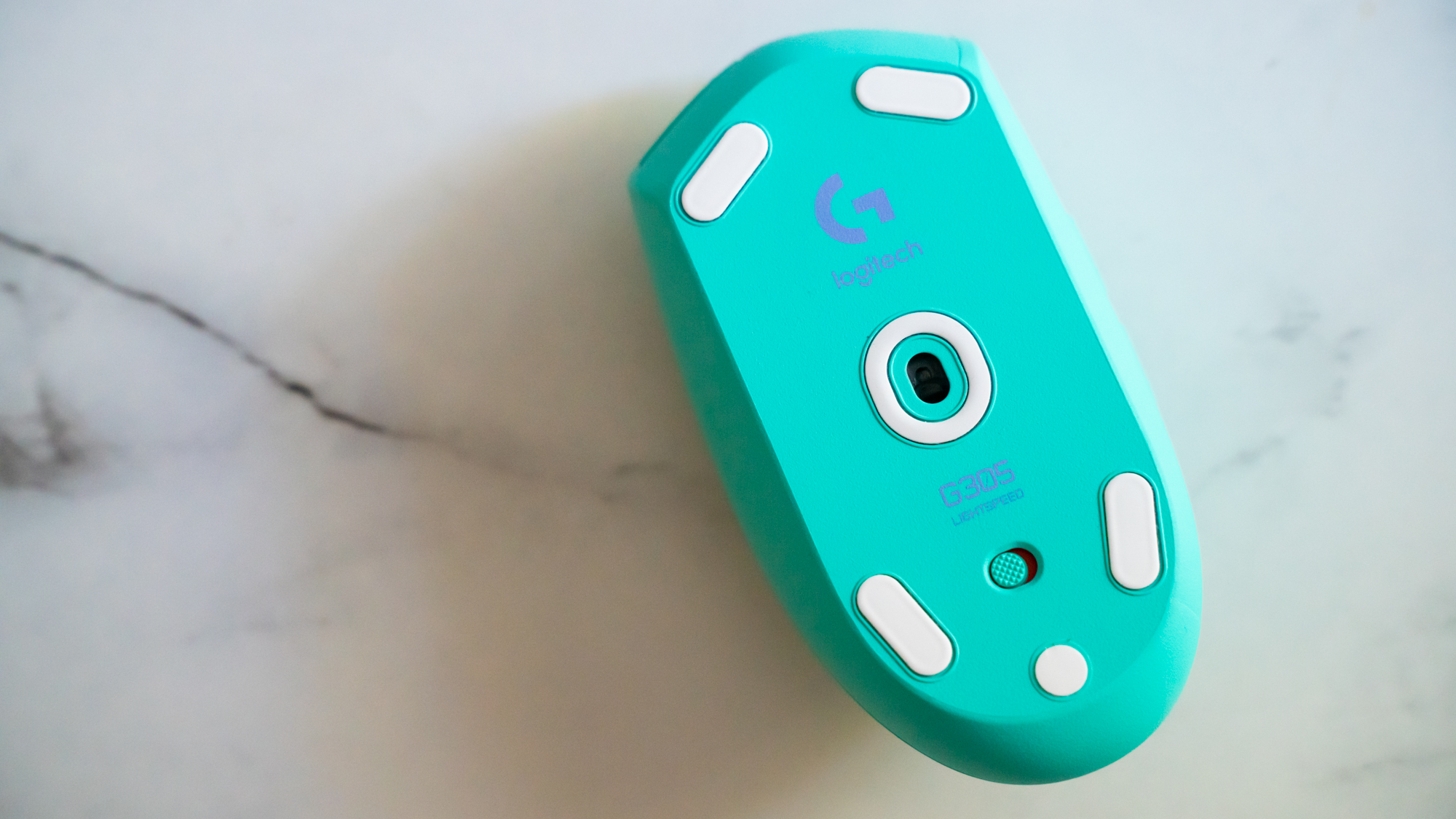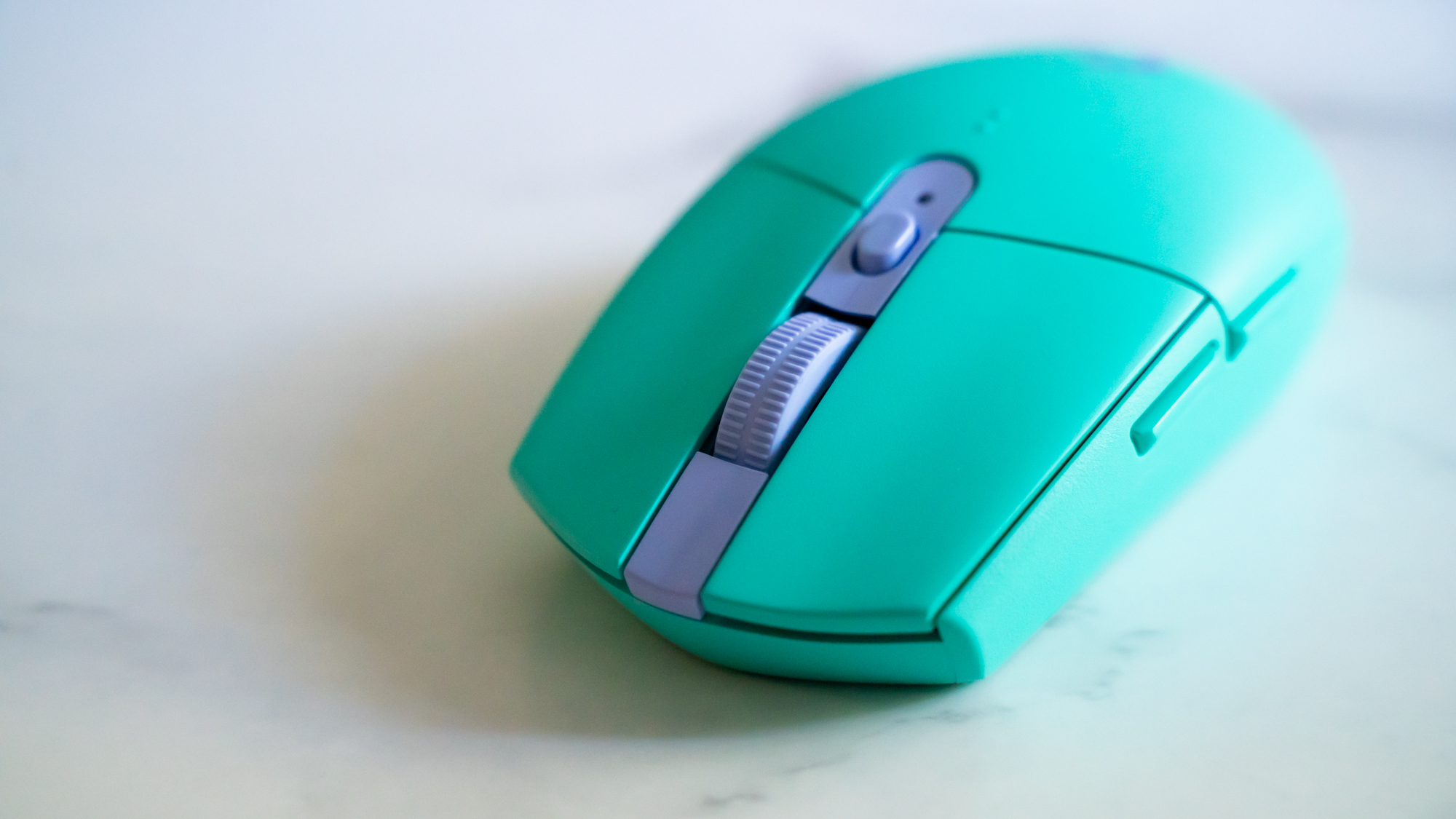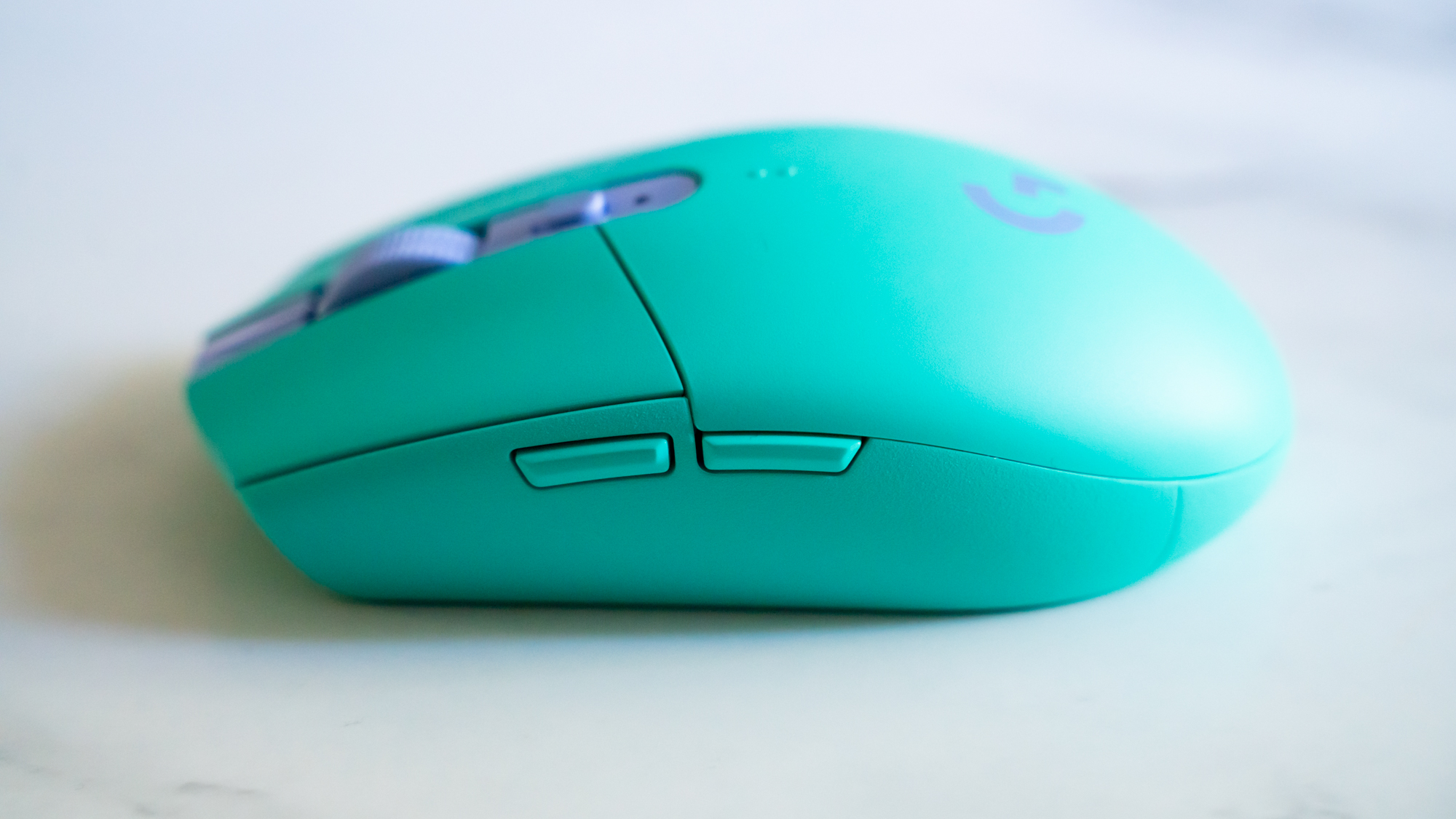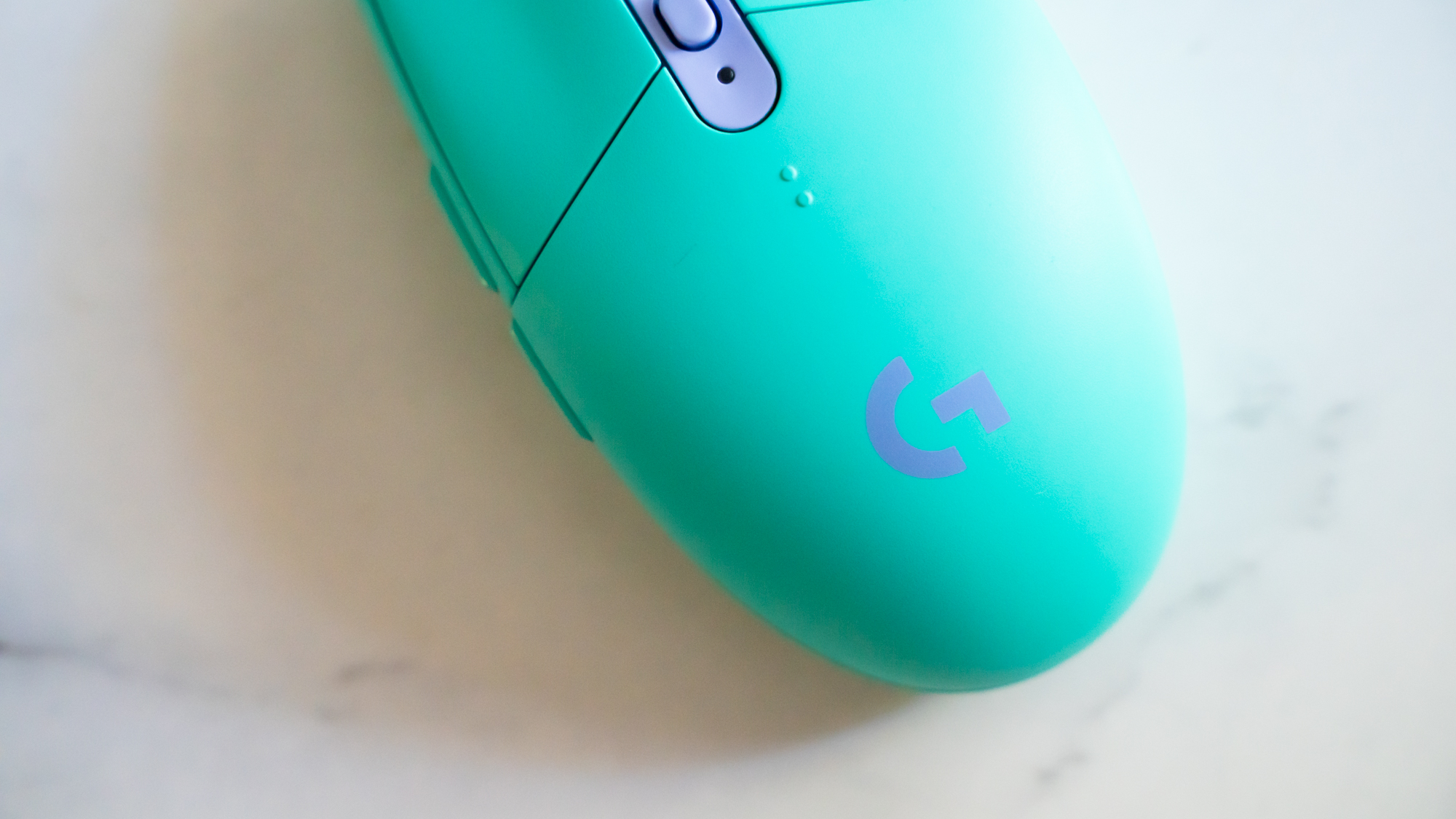TechRadar Verdict
Attractive, adept, and affordable, the Logitech G305 Lightspeed Wireless proves that wireless gaming mice don’t have to be expensive to see you through your favorite PC games. It isn’t perfect, but it’s certainly a terrific addition to what is hopefully a new trend in wireless peripherals.
Pros
- +
Adorable design that comes in equally adorable colors
- +
Very affordable for a wireless mouse
- +
Lots of preset remapping on hand
- +
Reliable wireless connection
Cons
- -
Might be too slim for bigger hands
- -
No Bluetooth
- -
Non-rechargeable
- -
No dedicated Sniper button
- -
Passable battery life
Why you can trust TechRadar
Two-minute review
Looking at the Logitech G305 Lightspeed Wireless, you wouldn’t expect it to be so cheap. Not that it’s the most impressive mouse you’ll ever see - on the contrary, it takes on a more minimalist aesthetic that’s a rarity in gaming mice. However, it also looks stylish, robust, and capable. More importantly, it’s wireless, and that feature always puts a premium, literally, on peripherals even now.
That’s really what makes this gaming mouse so special. It does almost everything so well while keeping its price not just affordable, but incredibly cheap. And, it hasn’t scrimped on some extra features either.
Originally at $59 (£51, AU$99), the Logitech G305 Lightspeed Wireless has even dropped its price in North America. US and Canadian customers, therefore, can now purchase it in almost every colorway for less, now touting a $39 tag in the US. That’s incredibly cheap for a wireless gaming mouse, and something we don’t always see these days.
Not that it doesn’t have competition. The Razer Basilisk X Hyperspeed sits at a similar price point, as does the Lenovo Legion M600 and the SteelSeries Rival 3 Wireless. So, you’ll probably want to check those out before you commit – though we must say, the G305 definitely has the fun factor.

There’s no denying the Logitech G305 Lightspeed Wireless is adorable. It comes in three different colorways – blue with lilac accents, lilac with purple accents, and mint with lilac – if you’re tired of the same old solid black color and want to spruce up your gaming setup. Of course, there’s also a white and a black one for those looking to keep things monochrome, as well as the K/DA special edition boasting a blue and black pattern on solid white for League of Legends and K-pop fans.
While being adorable, it does keep things classy and minimalist as well. There really aren’t a whole lot of gamer aesthetic touches here, which we prefer and actually helps make it so easy and seamless to use. It also has an ambidextrous design that’s a bit on the slimmer side and comfortable for both palm and claw grippers. Palm grip gamers will appreciate that nice curved palm rest – although that bump isn’t that pronounced, it’s rounded enough to provide support.

Speaking of the palm rest, it has a top panel that slides out to reveal the battery and Lightspeed USB receiver compartments. The receiver garage is a nice touch we all can appreciate as it keeps it safe and secure while we’re on the road.
Unfortunately, the AA battery compartment does mean that this isn’t a rechargeable mouse. Charging capabilities, preferably via USB-C, would have made it close to perfection, but Logitech had to cut costs somewhere. And, you’re also only getting 250 hours of battery life here.
Granted, some battery-powered wireless gaming mice give you much less. However, if you’re spending about four hours of gaming each day, you only really have about two months of use before you have to replace that battery. At least the indicator light below the DPI cycle button will notify you when you have 15% battery left, which should give you some time to run to the store and stock up.

But, more of the good stuff. The PTFE feet underneath work well on most surfaces. These combined with that 99-gram weight allows the mouse to effortlessly glide and move around, which is certainly helpful during intense battles and when you’re doing something detail-oriented like photo editing. That new optical sensor does, however, have a bit of a hard time on glass, but seeing as this isn’t a premium mouse, we’ll let that pass.


There are also six fully programmable buttons here, two of which – the left and right buttons – boast mechanical button tensioning, which gives them improved consistency and allows users to do lighter presses. Both buttons also deliver incredibly satisfying feedback and immediate bounce back when clicked, which we appreciate. We wish the two side buttons have less travel to them and a tad less resistance.
Logitech’s Lightspeed wireless connectivity has always been on point, and the one on Logitech G305 Lightspeed Wireless is no different. It’s very responsive with no noticeable lags even when you’re using it a little farther away from your gaming PC. We’re able to get accurate responses from 10 feet away, in fact. Using the mouse about 15 feet away and from another room, we have experienced some lags, but in the real world, no one would be doing that anyway so that hardly matters.
The thing that would make people hesitate is the lack of Bluetooth connectivity, which would have made it an even better value. But, at that price, it’s kind of hard to nitpick about stuff like that.

The Logitech G305 Lightspeed Wireless only offers 12,000 DPI max, but we just use the word “only” here in comparison to other wireless gaming mice. A few of them offer 18,000 to 20,000 DPI, which means that on paper, Logitech’s offering pales in comparison. However, considering that most players won’t really know the difference between 8,000 DPI and 20,000K DPI, this isn’t a biggie.
For a “cheap” wireless gaming mouse, it delivers such a fantastic performance. In Psychonauts 2, the mouse responds well, moving accurately with our own movements and triggering immediately at every press. We have the same experience with it playing Cyberpunk 2077. We haven’t experienced any missed presses or movement lags, even when fighting a powerful enemy and having to do a lot of quick presses. This mouse is more than able to keep up.
This wireless gaming mouse does have an annoying quirk, however. It doesn’t have a button that can really function as a sniper button, which lets you lower your DPI when pressed and reverts back to your chosen DPI setting when released. Logitech has instead opted for what it calls a DPI Shift function that you can assign to any of the six buttons.
While this does effectively drops your DPI to the lowest setting when pressed for those critical sniper shots, it doesn’t revert back, which means that you’re stuck at that lowest DPI setting until you manually revert it back using the DPI button. It’s an infuriating function and something that Logitech could have easily fixed.
Since they haven’t, a good workaround is utilizing the admittedly brilliant and very useful G-Shift function. By remapping G-Shift to the backside button then remapping the DPI Shift function to either the front side button or the DPI button, we’re able to get the same effect as when utilizing an actual sniper button. However, it’s still a two-step process.
If you’re confused by that, let’s explain quickly what the G-Shift function does. In essence, it’s like the Fn button on a keyboard in that it gives you a second set of buttons. You can assign a secondary function to every other button on the mouse that can only be triggered when you press and hold the button G-Shift is assigned to. Let that button go, and all those buttons revert back to their original functions. If you have a Logitech keyboard, you can even assign the G-Shift to one of its keys, something we tried successfully with our Logitech G915 TKL Lightspeed, which makes things a little easier to use and also frees up all your mouse buttons for remapping in G-Shift mode.
Of course, you do all that button remapping on the easy-to-use Logitech G Hub, which lets you do other things like create and save up to 5 profiles (yes, the mouse does have onboard memory) with each profile touting up to 5 DPI levels, pick a polling rate, and create macros. Sadly, there’s no RGB customizations on hand as the Logitech G305 Lightspeed Wireless doesn’t come with RGB lighting.
Still, as far as customizations go on a cheap gaming mouse, there’s a lot here. As there are things to love overall.

Buy it if…
You want great performance without paying a hefty price
For a cheap wireless gaming mouse, the Logitech G305 Lightspeed Wireless performs exceedingly well, with no signs of lags or missed presses. It’s also comfortable to use, even during long gaming sessions, and has that nifty G-Shift function.
You’re tired of the whole red on black aesthetic
Besides the usual solid black and solid white options, it comes in three different colourways and the K/DA special edition. If you want pops of color in your gaming setup, you’ll love this mouse. In fact, go all out and get the rest of Logitech’s Color Collection if you want.
You’re sick of cables
One of the cheapest wireless gaming mice on the shelves, this one’s a shoo-in if you’re just starting to get on the wireless bandwagon. Not just because it’s low-priced, but also because it’s capable and comes with nice features.
Don’t buy it if...
You’re a pro gamer and need something ultra-fast
With a DPI of up to 12,000 and a polling rate of 1,000Hz, it’s more than enough for most gamers. Unfortunately, esports gamers do need something faster, and this one might not cut it.
You want something rechargeable
It’s AA battery-powered, which means you better have a box full of AA batteries in one of your desk drawers. It isn’t surprising considering the price, but it’s still a bit disappointing.
You use the sniper button frequently
There’s no dedicated sniper button here, only Logitech’s DPI Shift button, which is a pain to use. There is a workaround, but it still forces you to do a two-step process.

Michelle Rae Uy is the former Computing Reviews and Buying Guides Editor at TechRadar. She's a Los Angeles-based tech, travel and lifestyle writer covering a wide range of topics, from computing to the latest in green commutes to the best hiking trails. She's an ambivert who enjoys communing with nature and traveling for months at a time just as much as watching movies and playing sim games at home. That also means that she has a lot more avenues to explore in terms of understanding how tech can improve the different aspects of our lives.
